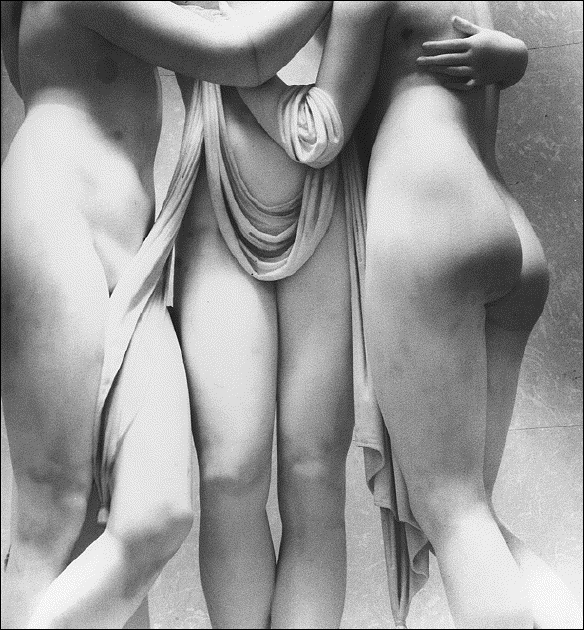For Beauty
Footbinding
In China
Wang Ping
(University of Minnesota)
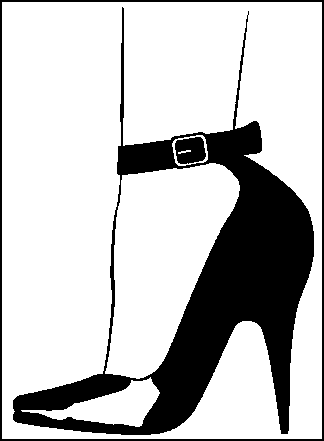 What the mothers would do is this: when the daughter was still young, they would take a cloth and twist it around her child's feet until they were bent down and the toes began to curl up and backwards towards the heel. It would be an excruciatingly painful experience (sometimes it would last for several years; the cloth would be tightened every week or so). The mother would never relent, for she knew that it was the secret to her daughter's, perhaps the whole family's, security and hope for the future.
What the mothers would do is this: when the daughter was still young, they would take a cloth and twist it around her child's feet until they were bent down and the toes began to curl up and backwards towards the heel. It would be an excruciatingly painful experience (sometimes it would last for several years; the cloth would be tightened every week or so). The mother would never relent, for she knew that it was the secret to her daughter's, perhaps the whole family's, security and hope for the future.Now you and I know that a woman's foot, which had been twisted and scarred by the binding, would not be something you and I would find especially sexy. But for the men of China, for almost a thousand years, there was something precious about this, the lowest part of the body, shrunk down to two or three inches, done so in such a way that is was useless for walking, for moving about. Feet that were twisted and torn, exuding their own peculiar smell, and the men were struck with passion. They called it the "golden lotus," in honor of the flower before it bloomed.
The feet were carefully hidden, so that when men were finally allowed to see it, to touch it, to kiss it, to caress it, to suck nuts from between the twisted toes (often the whole dipped in tea) --- they would go bananas.
This is how Wang describes what she calls "the duality" of it:
It shines with beautiful embroidery and irresistible charm on the surface, yet underneath there is only deformity and foul odor. It makes a woman appear celestial and high-bred; when bared, the feet resemble a pair of hooves. Adorned with shoes, bound feet invoke art and magic; under the bandages, however, is the trace of violence. Outside, a bound foot is erect and pointed like a penis; inside, it is creased and curved like a vagina. A pair of bound feet are sacred and dirty, a taboo and an object of desire. Footbinding contaminates and cleanses, curses and heals, masks and displays, seduces and kills. The list can go in indefinitely.
It's disgusting and sexist and depraved --- right? But is it any less depraved than what are done to women's breasts in this country, a similar attempt at "beauty;" breasts sometimes "enhanced" to a point if not of comedy, then of tragedy. And is it not possible that what we forced on women for so long --- the high-heel shoe --- was itself a form of foot-binding (have you looked at the feet of a woman who wore these shoes for twenty or thirty years?)
A worthy historian and critic will look at something as strange as footbinding, will distance himself or herself from the garishness of it, look at it calmly, and with reason, even, when possible, a bit of humor. Ping has in a chapter called "Edible Beauty: Food and Foot" for, she claims there was a dual sensuality of food and sex that revolved around these tiny members. (She backs up with excellent examples culled from the literature of the time.) She also quotes some of the absurd poems and plays that were written about the process. For example, this "Hunan ditty:"
Twin red shoes, less than three inches,
With pretty flowers for embroidery.
Wait till I tell the folks at home;
I'll mortgage the house, give up the land,
And wed with tiny feet as planned.
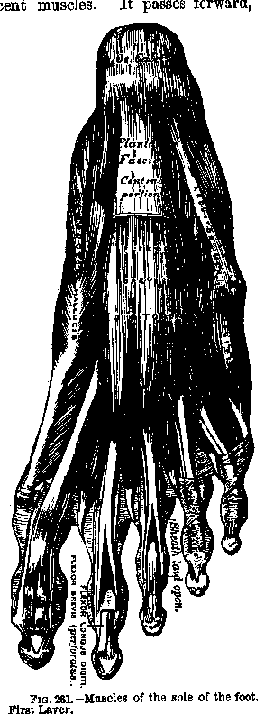 Her message is simple and telling. Big feet, so close to the earth, were considered to be filthy. Contrasted to that, there was a duality --- what she calls "the cult of the exemplary woman" --- symbolized by the tiny foot. That woman was called upon to act faithful, shy, humble, and --- as a result of her pre-planned deformity --- unable ever to be truly independent (how can you escape when you cannot walk?)
Her message is simple and telling. Big feet, so close to the earth, were considered to be filthy. Contrasted to that, there was a duality --- what she calls "the cult of the exemplary woman" --- symbolized by the tiny foot. That woman was called upon to act faithful, shy, humble, and --- as a result of her pre-planned deformity --- unable ever to be truly independent (how can you escape when you cannot walk?)
For some of us, footbinding has echoes in our own society. For instance, one can compare Chinese society's worshipful view of their "created" disability to the distance we give to strange treatment of disabilities in our own society. To put it another way, is it not possible for those of us who are disabled to envy the world of the purposely crippled? What would it be like, we might wonder, for our society to see beauty in places where those of us who are there have been forced to see something else. [For further thoughts on this, go to Footbinding and Disability]
Wang misses none of the ironies implicit in physical martyrdom for an economic or social purpose. At one point, she compares footbinding to castration --- "the short cut" --- that made it possible for young men to enter in service to the Ming Dynasty. As always, her study is complete. She has studied a great variety of texts, some going back hundreds of years; her footnotes take up over twenty pages. As always, she stands back from the cruelty and horror of it to unveil the explicit and implicit reasons that a society would perform such violation of the young --- for what they thought would be the ultimate good of all.
Ice Gets
Shackleton's
Antarctic Expedition
1914 - 1916
Melinda Mueller
(Van West and Company)
The only way they could survive was by going on to the whaling station on South Georgia Island, so Shackleton left most of the crew behind and for two weeks, in a launch called the James Caird, with a crew of five and made it through storms and waves and cold some 800 miles to the island. Which they had to cross on foot since they were on the wrong end from the station.
Mueller has managed to compress eighteen months of cold and starvation and suffering and pain into a 2,000 line poem which has its ups and downs but which mostly when we're done with it leaves the reader wondering "why bother?" First, why this form? Writing narrative poetry is a tricky business. When you think about it, there aren't very many of these poems hanging around that you and I want to bother to pick up and read. There's the "Iliad" and the "Odyssey" of course, as well as Chaucer's "Canterbury Tales." Those of Boccachio and Milton and Spenser --- we probably wouldn't bother. Perhaps we might take a gander at Pope's "Rape of the Lock" and Lord Byron's "Don Juan" for the satire. (Pope and Byron could write in this style because the form was dying).
For the narrative form to work, at least as it was originally conceived, it has to tell a noble tale about a worthy subject. Somehow, when we think of Shackleton's journey, it may be epic but what he set out to achieve compared to what he achieved is almost comic. Who but a nut-case would exchange a year in a half in the warmth of a London pub for wallowing around in rime, dodging glaciers and pack ice, eating penguins and terns, slopping around in freezing water, going to bed on a mattress of permafrost?
It says as much about the madness of the culture and the times that one was considered heroic if one went to an dark and bitter place to work up some frost-bite and madness. In retrospect, all one had to do was to wait a year and ship off to Ypres or Mons and get the same misery in a trench where, at least, you could get a package of biscuits and sweets from home every month or so. Shackleton's bitter journey, in other words, is not one that inspires feelings of nobility.
Coupled with that is the problem of Mueller's technique. She feels compelled to quote extensively from the journals kept by Frank Worsley, Frank Wild, Lionel Greenstreet, and Shackleton himself. (She even drags in Apsley Cherry-Garrard whose adventures were somewhere else again, being in the North Pole, not South Pole.) However, in our view, poetry --- narrative or no --- must be consistent in rhythm and construct. Pasting in the words of these nut cases may be true to the story, but they don't give a consistent voice. This is not to say that the words of the participants do not, on occasion, reach high poetry. For instance, this from the photographer Frank Hurley,
Immense clouds of dark vapour rolled skyward from the water, as if from a boiling lake. These mists solidified into crystals, which fell in shimmering showers from the clear blue sky --- a rain of jewels. The sun shone through the glinting fall in great rainbow circles, which spanned the sky. The crystal showers carpeted the pack ice and ship until she looked like a tinselled beauty on a field of diamonds.
Or this, from Frank Worsley,
Spreading out till they meet, forming long and beautiful snow-cliffs, washed at their bases by the waters of illusion.
If the actual locale is wind-swept, frigid, storm bound, awful --- the light and beauty, even the mirages, must have been astonishing, what with mock suns, auroras, ice flowers, icebergs, even on occasion their own companions floating upside down on the horizon. All this is the stuff of poetry. But the story itself, the antics of a handful of men bent on a self-destructive journey to an imaginary place called the South Pole, is not necessarily poetic. When it turned tragic, it was not a noble tragedy, but a stupid one.
Sculpture
5,000 Years
Photographs by David Finn
(Harry N. Abrams)
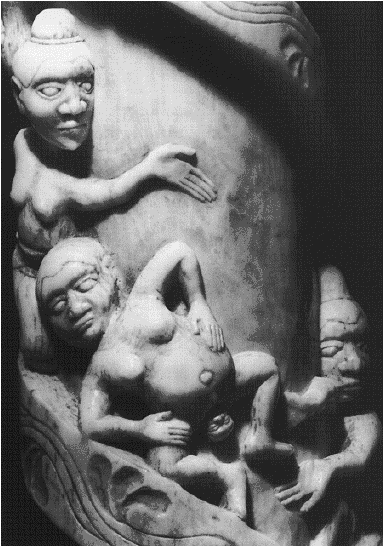
- I believe that the photographer's eye can compose those elements in the viewfinder in a way that reveals the qualities of their greatness and thereby can product a photograph that in itself may be a fine work of art.
In her introductory essay, "The Treasures of the Stone Body: Sight and Touch," Vicki Goldberg says that all photographs are excerpts --- "pieces cut from a larger world. Component parts of a building, a battle, a community, some whole that may be unknown to the viewer." She then gives us a brief history of this sculpture, starting with the Greeks. She discusses the sexual aspects of the nude, tells of those myths, men and women who fell in love with sculptures, fell in love with representations of Venus. She recalls Pygmalion, who fell in love with his statue and asked Venus "to give her life and had his wish granted." She tells of a visitor to the studio of Maillol, who reported,
His eye travels over their rounded bodies, his hands caress a budding breast, the column of a thigh, and linger over the curve of a knee or calf, the crease of a hip still covered with a damp cloth, or a swelling pair of buttocks. "I love to caress buttocks, lovely full buttocks. They're the most beautiful shape nature ever created."
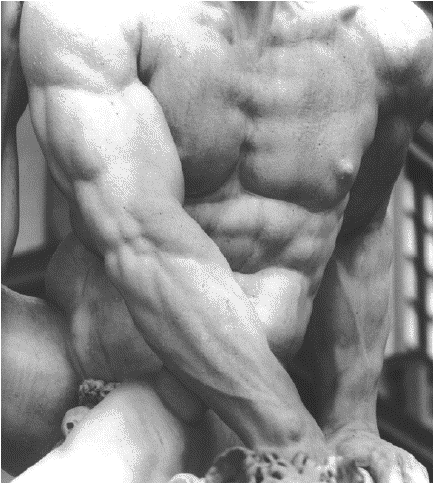 There's something to the sensual side of it. Of the almost two hundred figures represented here, some are so exquisitely sexual that one feels one might be in the presence of the "perfect" human form. Some of the Greek Classical sculptures from 2500 years ago, works of the Renaissance artists such as Baccio Bandinelli, Giambologna, and Gian Lorenzo Bernini, are so inviting that we feel slightly silly, wondering that icy marble could convey such a sense of passion. The 19th Century Antonio Canova and Giovanni Dupré turns breast and buttock and thigh --- even the marble drapes covering these parts of the body --- into something that wouldn't be out of place in the pages of "Playboy" or "Christopher Street."
There's something to the sensual side of it. Of the almost two hundred figures represented here, some are so exquisitely sexual that one feels one might be in the presence of the "perfect" human form. Some of the Greek Classical sculptures from 2500 years ago, works of the Renaissance artists such as Baccio Bandinelli, Giambologna, and Gian Lorenzo Bernini, are so inviting that we feel slightly silly, wondering that icy marble could convey such a sense of passion. The 19th Century Antonio Canova and Giovanni Dupré turns breast and buttock and thigh --- even the marble drapes covering these parts of the body --- into something that wouldn't be out of place in the pages of "Playboy" or "Christopher Street."
The photography is wonderful, and the book --- as with all of Abrams books --- has an exquisite feel to it. Our only complaint is that so little is offered of other cultures. We are given only twelve representations from the world between India and China, another four from Africa, and a handful from the Pacific rim. The "moderns" --- Rodin, Epstein, Brancusi, Gustav Vigeland, Marino Marini, and Henry Moore, et al appear on the last thirty plates or so --- but there are none of the vigorous new artists of South America and modern Africa to offset this Euro-centric bias of the book.
